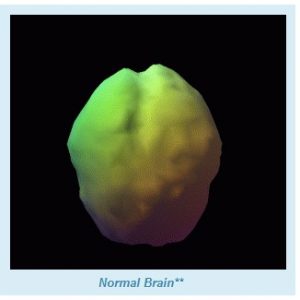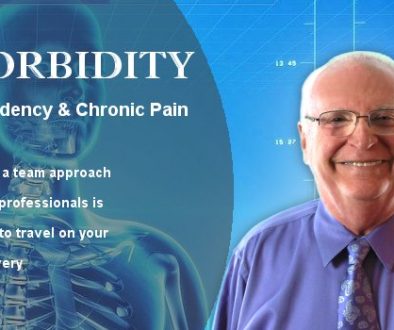Opioid Addiction
The number of addicts is of epidemic proportions. If you include the commonest drug, alcohol, you will find there are hidden alcoholics in friends or family of all of us. There are 60,000 heroin users and 100,000 current opioid prescription abusers in the greater Baltimore area. There are 5 million U.S. residents that use illicit opiates. Existing addiction services can treat fewer than 210,000 nationwide at any one time. We Care Arundel Health Services, which is where I am the Medical Director, is one of the best local addiction methadone treatment clinics in the Glen Burnie area. They do what they say and that is “We Care”. I also provide private Buprenorphine(commonly known as Suboxone) treatment for maintenance in the Towson area and in neighboring specialized offices. Acceptance is limited to 100 patients per doctor. Hopefully, a change in law may allow an increase in the future. Waiting time for an empty slot varies. Personally, when I can temporarily no longer fit future patients into my schedule on short notice, one of my knowledgeable colleagues usually can provide this most needed service. I do not accept insurance for doctor visits but do provide preauthorization requests to insurance companies for medication at the pharmacy which is the highest expense.
Opioid dependence is a chronic, relapsing medical condition. It is a lifelong, progressive and incurable disease if left untreated. Unbeknownst to the public, ongoing opioid use causes chemical and structural changes in the brain that are frequently permanent and can cause memory loss and behavioral changes that can aggravate or cause anxiety and/or depression. These changes are not generally seen on routine CT scans and MRI’s. Testing with comprehensive psychological evaluations and functional PET brain scans are not usually done because they are cost prohibitive. The changes in metabolic brain activity or the too rapid withdrawal from opioids really exacerbates the anxiety and depression which compounds the myriad of physical signs and symptoms that involve all systems of the body of an affected addict. Such states of despair are dramatically improved by methadone or buprenorphine which is commonly known as suboxone.
Going “cold turkey” from high doses of opioids or synthetic opioids can cause serious withdrawal reactions which can be life threatening. Rapid detoxification is generally temporary. Relapse is almost guaranteed in time because the current scientific evidence indicates that the opioid effects in the brain may be at least partially permanent which makes one subject to environmental cues. Hence, appropriate short term use of opioids even after surgical procedures can result in increased sensitivity and one can start using again with cravings that can be severe. Therefore, caution is advised to the physician or dentist when short term narcotics are used for pain control in previously afflicted individuals.
When pain is of mild or moderate severity, over the counter ibuprofen or aspirin with or without Tylenol is commonly recommended. This is additive with methadone which is also a strong pain killer even though we usually don’t prescribe it for short term pain relief. Chronic pain management is best left to the discretion of the pain management specialist or family doctor. I treat the addiction and leave the physical and mental health issues that require prescriptions up to the primary care provider or psychiatrist as part of a team approach to the patient.
A word of caution to those who are also using cocaine, alcohol or “benzos”(benzodiazapenes) before or after initiating the use of methadone or buprenorphine(suboxone). Benzos include drugs like Xanax and Valium. There can be an immediate life threatening drug interaction between a benzo and methadone or suboxone that is not always related to the dose consumed. So having a prescription for a benzo does not decrease the risk of an adverse reaction but has been used as a last resort when other drugs do not work. When properly medically supervised in a patient who is serious about getting well, methadone use itself does not cause severe reactions which affect the heart and lungs. When combined with drugs that depress respiration or affect the heart, the risk must be known to the patient and then they can decide of their own volition whether to take them or not.
The one factor that is completely controllable by the patient is the exposure to other users of illicit drugs who are a bad influence on the user who is trying to control his or her addiction. These other users are not true “friends”. They are “business associates” who are using YOU to get high with or using YOU to make money off of and that is it! “One time, it won’t hurt you” or “partying to stay up with the Jones” doesn’t cut it. It can be that simple trigger to start up the addiction activity all over again. Then you go two steps back before gaining one step forward that is necessary for rehabilitation and functioning normally in society.
Staying clean off illicit drugs with legal and medically supervised methadone or buprenorphine is difficult initially during what we call the induction phase, but when once stabilized on a maintenance dose, it usually is not a problem. My goal with suboxone therapy is to get you feeling “normal” and functioning without cravings nor withdrawal symptoms in the induction phase during the first month of therapy with 2-3 visits and then keep you on monthly maintenance which may be a long time. You will get a prescription to be filled at the pharmacy for the actual drug at each visit. Tapering off is a long and slow process once the body and mind are stable. You decide with the doctor if and when you are ready to do this, if at all, so that it is done under medical supervision to prevent relapse which otherwise occurs up to 85% of the time. With methadone, it is dispensed daily in licensed clinics. Medication take home privileges for self -administration are given roughly one additional day every three months, once responsibility and staying clean are demonstrated. Tapering off methadone takes much longer.
Relief after dosing can be dramatic but it is not like turning off a light bulb. It usually takes days to weeks but is usually faster with suboxone which is generally used for milder cases but can be successful in heavy users. Feeling better within hours is not uncommon. Withdrawal symptom relief can be enhanced with over the counter medications.
Like any chronic disease such as diabetes that requires insulin or pills every day to control blood sugars, even when they are normal, or taking blood pressure pills for hypertension to keep it normal, methadone or buprenorphine has to be taken daily to maintain normalcy. The hardest thing for a young person to accept is the fact that they have a chronic disease and may have to take medication for the rest of their lives but you should be prepared to take this medication for at least 1-2 years before considering to taper off which should be discussed with me first. Tapering off without supervision is doomed to failure. In my experience over the past 50 years, suboxone is one of the safest long term drugs that I have ever experienced for my patients. I will use the lowest possible dose to keep you feeling normal. Individual and group counseling and/or therapy is recommended to enhance your recovery as part of a comprehensive approach to wellness.
I am available for any questions and will be happy to discuss any of your concerns in strict confidentiality. Your records are securely kept by me personally and no one can get access. None can be released without your written approval . I look forward to helping you on your road to recovery!
Lee E. Gresser M.D.
**SPECT Image Courtesy of Amen Clinics, Inc. www.amenclinics.com





